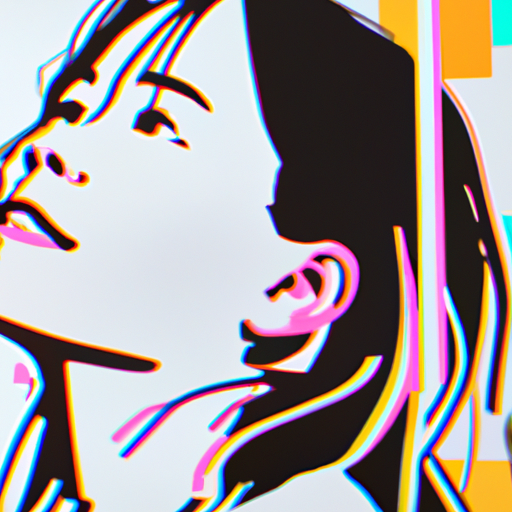-
Table of Contents
- Watercolor Techniques for Digital Design
- The Appeal of Watercolor in Digital Design
- Watercolor Techniques for Digital Design
- 1. Wet-on-Wet Technique
- 2. Dry Brush Technique
- 3. Salt Technique
- 4. Masking Technique
- Benefits of Using Watercolor Techniques in Digital Design
- Case Studies: Successful Implementation of Watercolor Techniques in Digital Design
- 1. Airbnb
- 2. Dropbox
- Conclusion
Watercolor Techniques for Digital Design
Watercolor is a versatile and popular medium that has been used by artists for centuries. Its unique properties, such as transparency and fluidity, make it a favorite among painters. In recent years, watercolor techniques have also found their way into the world of digital design. This article will explore how watercolor techniques can be applied to digital design, the benefits they offer, and provide valuable insights for designers looking to incorporate this style into their work.
The Appeal of Watercolor in Digital Design
Watercolor has a distinct aesthetic that is often associated with creativity, freedom, and a sense of spontaneity. It can add a touch of warmth and organic feel to digital designs, which are often characterized by clean lines and sharp edges. By incorporating watercolor techniques into digital design, designers can create visually appealing and unique artworks that stand out from the crowd.
One of the main reasons why watercolor techniques have gained popularity in digital design is their ability to evoke emotions and create a sense of nostalgia. Watercolor paintings often have a dreamy and ethereal quality that can transport viewers to another time or place. By using watercolor techniques in digital design, designers can tap into these emotions and create designs that resonate with their audience on a deeper level.
Watercolor Techniques for Digital Design
There are several watercolor techniques that can be adapted for digital design. Let’s explore some of the most popular ones:
1. Wet-on-Wet Technique
The wet-on-wet technique involves applying wet paint onto a wet surface. This technique creates soft and blended edges, which can be replicated in digital design by using brushes with low opacity and flow settings. By layering multiple brush strokes with varying colors and opacities, designers can achieve a similar effect to wet-on-wet watercolor paintings.
2. Dry Brush Technique
The dry brush technique involves using a brush with very little water or paint to create textured and rough strokes. In digital design, this effect can be achieved by using brushes with high texture and scattering settings. By applying quick and short strokes with varying pressure, designers can mimic the look and feel of dry brush watercolor paintings.
3. Salt Technique
The salt technique involves sprinkling salt onto wet watercolor paint to create interesting textures and patterns. While it may not be possible to replicate this exact effect in digital design, designers can use brushes with textured patterns or apply digital filters to create a similar salt-like texture.
4. Masking Technique
The masking technique involves using masking fluid or tape to create areas of white space in watercolor paintings. In digital design, designers can achieve a similar effect by using layer masks or erasing parts of a digital painting to reveal the underlying background. This technique can add depth and visual interest to digital watercolor designs.
Benefits of Using Watercolor Techniques in Digital Design
Using watercolor techniques in digital design offers several benefits:
- Unique and Eye-catching Designs: Watercolor techniques can help designers create visually appealing and unique designs that stand out from the crowd.
- Emotional Connection: Watercolor aesthetics can evoke emotions and create a sense of nostalgia, allowing designers to connect with their audience on a deeper level.
- Organic and Natural Feel: Watercolor techniques can add a touch of warmth and an organic feel to digital designs, which are often characterized by clean lines and sharp edges.
- Flexibility and Experimentation: Digital tools allow designers to experiment with different watercolor techniques without the limitations of traditional materials. This flexibility encourages creativity and exploration.
- Time and Cost Efficiency: Digital watercolor techniques eliminate the need for physical materials and allow for easy experimentation and revisions, saving time and reducing costs.
Case Studies: Successful Implementation of Watercolor Techniques in Digital Design
Several brands and designers have successfully incorporated watercolor techniques into their digital designs. Let’s take a look at some inspiring case studies:
1. Airbnb
Airbnb, a popular online marketplace for vacation rentals, used watercolor illustrations in their “Live There” campaign. The illustrations added a whimsical and dreamy touch to the campaign, capturing the essence of different travel destinations. The watercolor aesthetic helped create an emotional connection with viewers and conveyed a sense of adventure and exploration.
2. Dropbox
Dropbox, a cloud storage service, used watercolor illustrations in their rebranding campaign. The illustrations added a human touch to their brand identity and conveyed a sense of creativity and collaboration. The watercolor style helped differentiate Dropbox from its competitors and made their brand more memorable.
Conclusion
Watercolor techniques offer a unique and appealing aesthetic that can be successfully applied to digital design. By incorporating wet-on-wet, dry brush, salt, and masking techniques, designers can create visually stunning and emotionally engaging designs. The benefits of using watercolor techniques in digital design include creating eye-catching designs, establishing an emotional connection with the audience, adding an organic feel to digital artwork, and allowing for flexibility and experimentation. Successful case studies, such as Airbnb and Dropbox, demonstrate the effectiveness of watercolor techniques in digital design. So, whether you’re a seasoned designer or just starting out, consider exploring watercolor techniques to add a touch of creativity and uniqueness to your digital designs.
